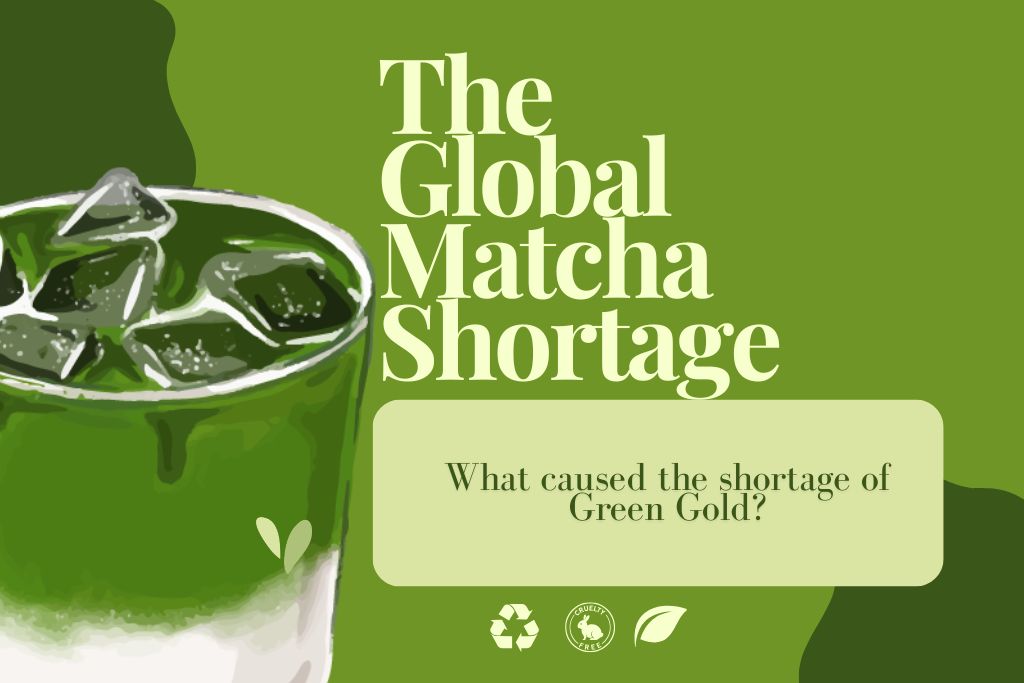Where Has All the Matcha Gone? Inside the Worldwide Supply Crunch

Matcha, the vibrant green tea powder revered for its health benefits and earthy flavor, has become a global phenomenon. From artisanal cafes to skincare shelves, matcha has surged in popularity over the past decade. But recently, a significant challenge has emerged: a global matcha shortage.
This case study explores the root causes of the global matcha shortage, its far-reaching impacts, and what it means for producers, retailers, and consumers alike.
Understanding Matcha: A Global Sensation
Matcha is made from shade-grown tea leaves, primarily from Japan, that are carefully harvested, steamed, dried, and ground into a fine powder. Unlike steeped green tea, matcha is consumed whole, delivering higher concentrations of antioxidants, caffeine, and amino acids.
This unique profile, combined with matcha’s health benefits—such as boosting metabolism, enhancing focus, and providing calming energy—has made it a top pick for health-conscious consumers, fitness influencers, and wellness brands.
The Surge in Global Demand
In the last five years, matcha has gone from a niche beverage to a mainstream superfood. Cafes and coffee chains have adopted it widely, with matcha lattes becoming standard menu items. Matcha is now featured in smoothies, pastries, ice cream, protein powders, and skincare products.
The rise of social media platforms, especially Instagram and TikTok, has played a major role in this surge. Influencers showcase their morning matcha routines, vibrant green smoothies, and wellness rituals—contributing to its image as a luxury health trend.
Gen Z’s Obsession with Matcha
One major driver behind this skyrocketing demand and contributing to the global matcha shortage is Gen Z. Known for their focus on wellness, sustainability, and aesthetic appeal, Gen Z has fully embraced matcha culture. For this generation, matcha is not just a drink—it’s a lifestyle statement.
Why Gen Z Loves Matcha:
- Wellness-first mindset: Matcha’s health benefits align with Gen Z’s preference for clean energy over sugary or overly processed drinks.
- Eco-conscious choices: Gen Z favors sustainable products, and high-quality matcha is often associated with eco-friendly farming.
- Aesthetic appeal: The vivid green color and versatility in lattes, smoothies, and desserts make it an Instagram favorite.
- Influencer and social media culture: Trends spread quickly on platforms like TikTok, where matcha recipe videos and “matcha girl morning routines” go viral.
This obsession has significantly amplified global demand, placing additional pressure on an already strained supply chain and contributing to the global matcha shortage.
The Supply Side: Why Is There a Global Matcha Shortage?
1. Limited Geographic Production
Matcha is traditionally produced in Japan, specifically in regions like Uji, Nishio, and Shizuoka. The cultivation of high-grade matcha requires meticulous growing conditions, skilled labor, and time-intensive processing. This restricts large-scale scalability and adds to the global matcha shortage.
2. Climate Change & Crop Yields
Changing weather patterns, typhoons, and extreme heat have impacted tea harvests in Japan. Droughts and erratic rainfall lead to reduced yields and lower-quality harvests, directly impacting matcha availability.
3. Labor Shortages in Japan
Japan’s aging population and rural depopulation are causing labor shortages in agriculture, including matcha farms. Younger generations are not entering traditional farming, leading to workforce gaps and production delays.
4. Pandemic Disruptions
COVID-19 disrupted global supply chains, from labor shortages to delays in export logistics. Even as demand rose during the wellness boom, supply couldn’t keep up—fueling the global matcha shortage.
5. Export Constraints
Japanese producers prioritize domestic matcha consumption, which further limits the supply available for international markets. High-quality ceremonial-grade matcha is especially scarce.
The Economic Impact of the Global Matcha Shortage
- Rising Prices: Matcha prices have surged due to high demand and limited supply. Premium ceremonial-grade matcha has seen price hikes of over 30% in the past year.
- Retail Struggles: Cafes and wellness brands reliant on matcha are struggling to maintain inventory and consistent pricing.
- Counterfeit and Low-Grade Matcha: To meet demand, some suppliers have introduced low-quality or adulterated matcha, misleading consumers and diluting brand trust.
Global Industry Reactions
Cafes and Beverage Brands
Many coffee shops are either limiting matcha offerings or switching to lower-grade versions. Others are exploring matcha alternatives, such as hojicha or spirulina-based drinks.
Retailers and DTC Brands
Brands are being forced to diversify sourcing and adjust formulations. Subscription-based matcha brands are implementing waitlists and pre-orders to manage demand.
Suppliers and Farmers
Japanese suppliers are increasing investment in cultivation and export capacity. There’s also rising interest in expanding matcha production in countries like China, Korea, and even parts of the U.S.
The Role of Sustainability
As demand rises, so does the pressure to ensure sustainable and ethical matcha farming. Gen Z’s values are pushing brands to be transparent about sourcing, labor conditions, and environmental impact.
Organic certifications, regenerative agriculture, and direct trade relationships are becoming key differentiators for matcha brands looking to maintain customer loyalty amid the global matcha shortage.
What Consumers Can Expect
- Higher Prices: Premium matcha will likely continue to rise in price due to constrained supply.
- Limited Availability: Stockouts and waitlists may become common, especially for ceremonial-grade products.
- More Transparency: Expect brands to emphasize sourcing details and sustainability practices to maintain trust.
- Alternative Products: Matcha alternatives or blends with other superfoods may become more mainstream.
Strategies for Brands to Tackle the Global Matcha Shortage
- Diversify Supply Chains: Explore alternate sourcing regions while maintaining quality standards.
- Invest in Education: Help consumers understand the value, quality differences, and sustainable impact of their matcha.
- Embrace Gen Z Trends: Lean into social media, storytelling, and wellness branding to resonate with Gen Z consumers.
- Transparency is Key: Clearly communicate farming practices, labor conditions, and product grades.
Conclusion
The global matcha shortage is a complex issue rooted in rising demand, environmental stress, limited production, and generational shifts in consumption. Gen Z’s obsession with matcha has accelerated this supply crunch, turning the green powder into one of the most coveted commodities in the wellness industry.
For businesses, this presents both a challenge and an opportunity—to innovate, to source ethically, and to educate consumers. For consumers, it’s a reminder of how our choices impact global supply chains.
Whether you’re a brand owner, retailer, or matcha enthusiast, understanding the dynamics behind the global matcha shortage can help you adapt and stay ahead in a rapidly changing market.
